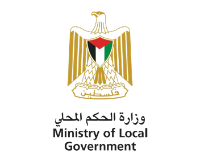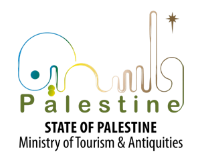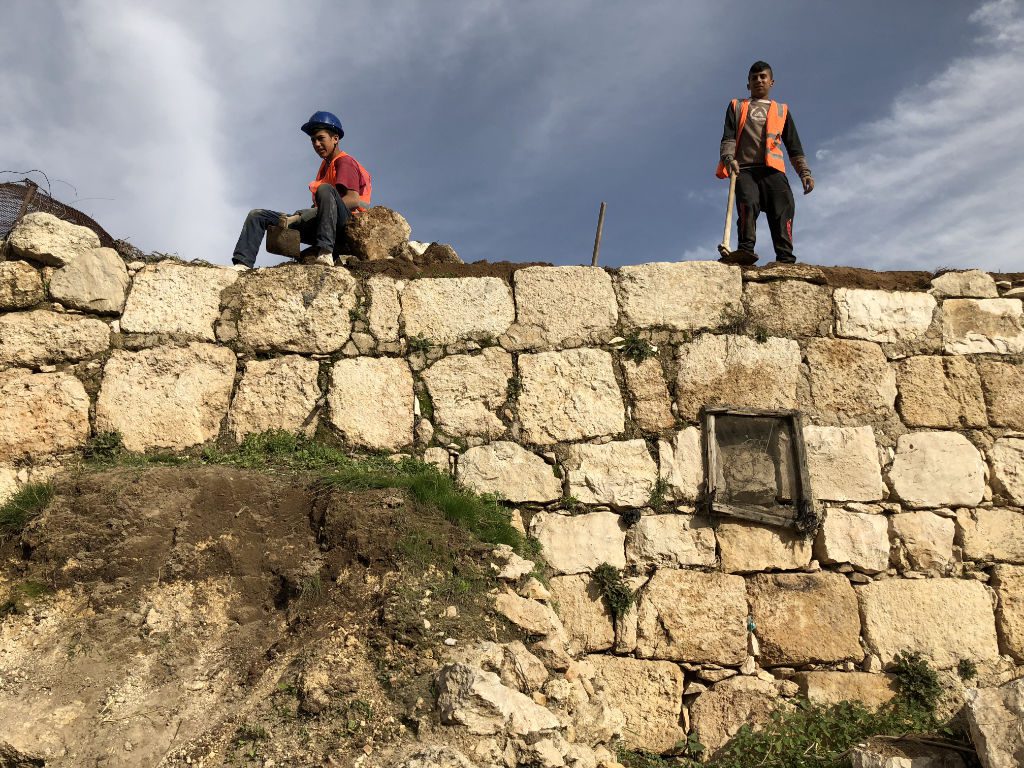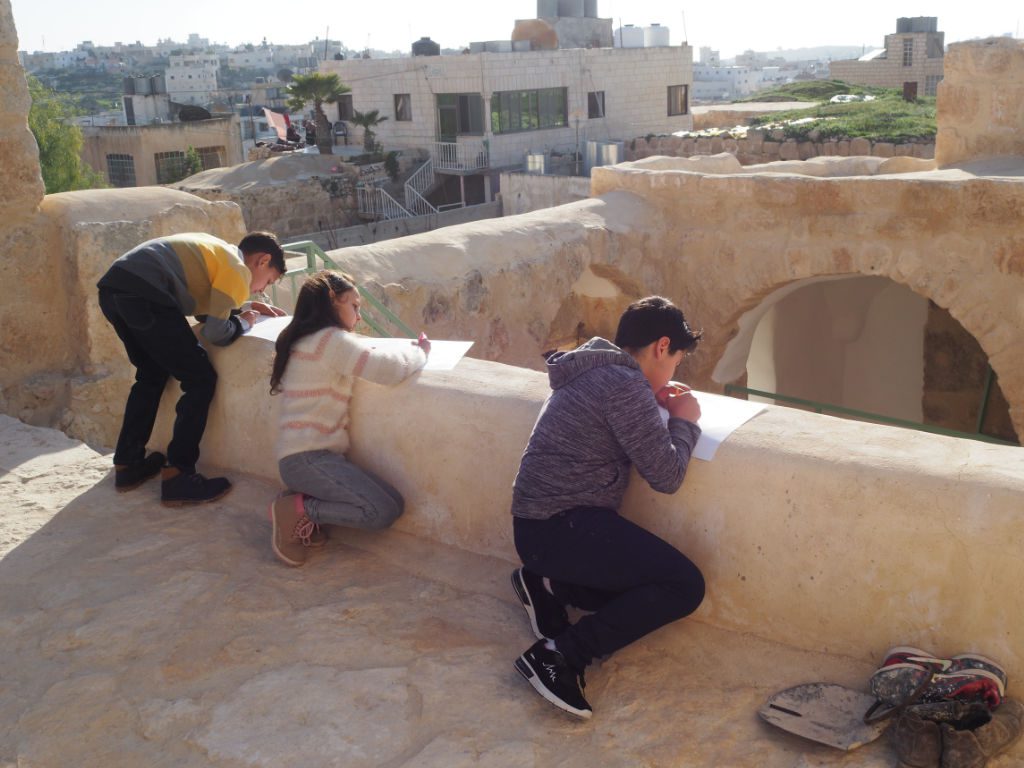2016
Undertaking an inventory
The project aimed both to protect and restore the built heritage.
The starting point was the identification, documentation and consolidation assessment of the ahwash, to create a complete heritage inventory of the city. The task has been complex,since many of the historic buildings are masked by modern constructions while others are in ruins or abandoned.
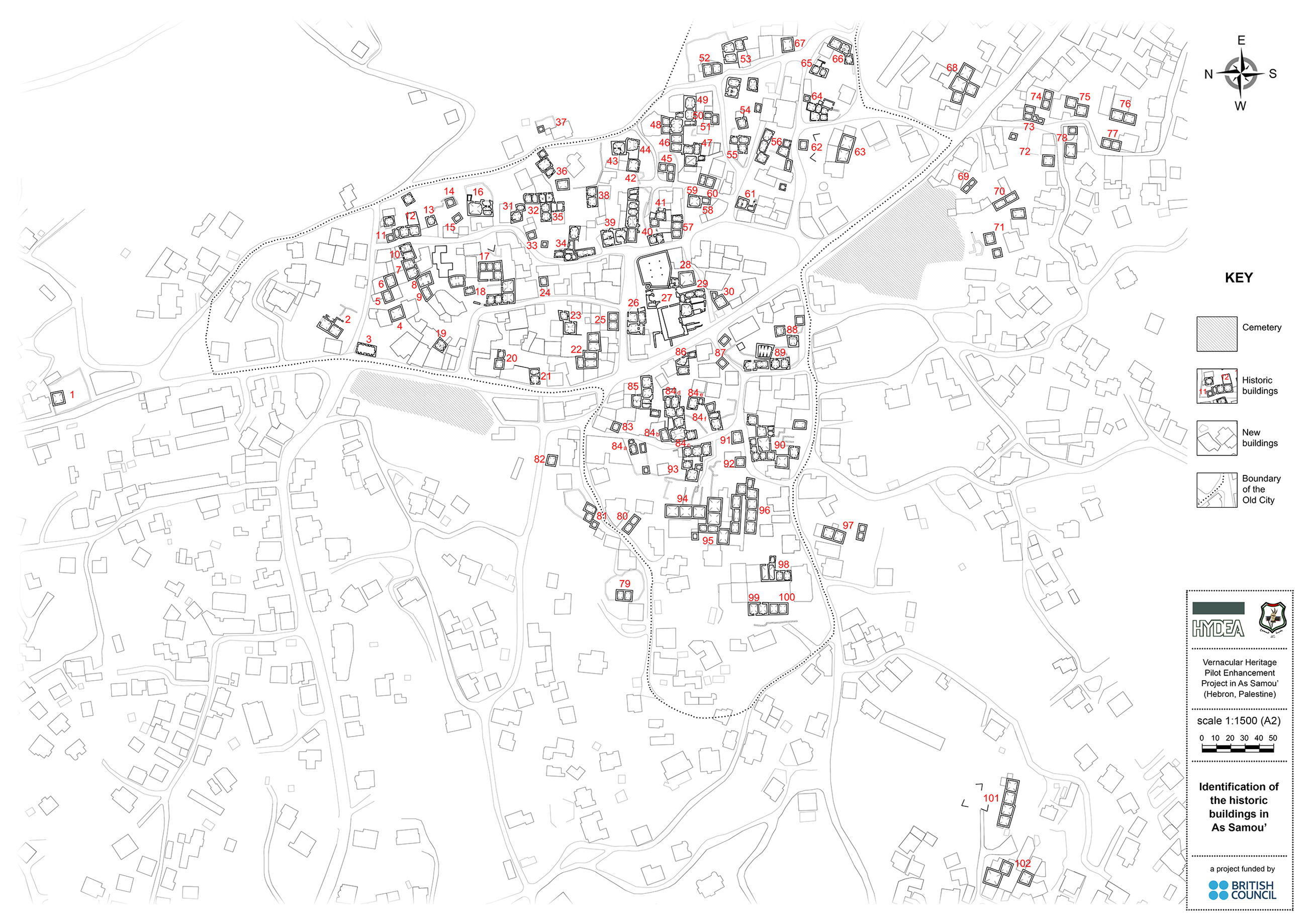
In addition, the work involved many people: from the local community, including volunteers, students from Birzeit University and Palestine Polytechnic University and colleagues from local NGOs.
The use of the UCK (Urban Collector Kit) has been fundamental to transfer data from field surveys directly into a database. Local people have been trained to use the UCK to map all the buildings. This will make it easier for future generations to know about the detailed past of any cultural asset.
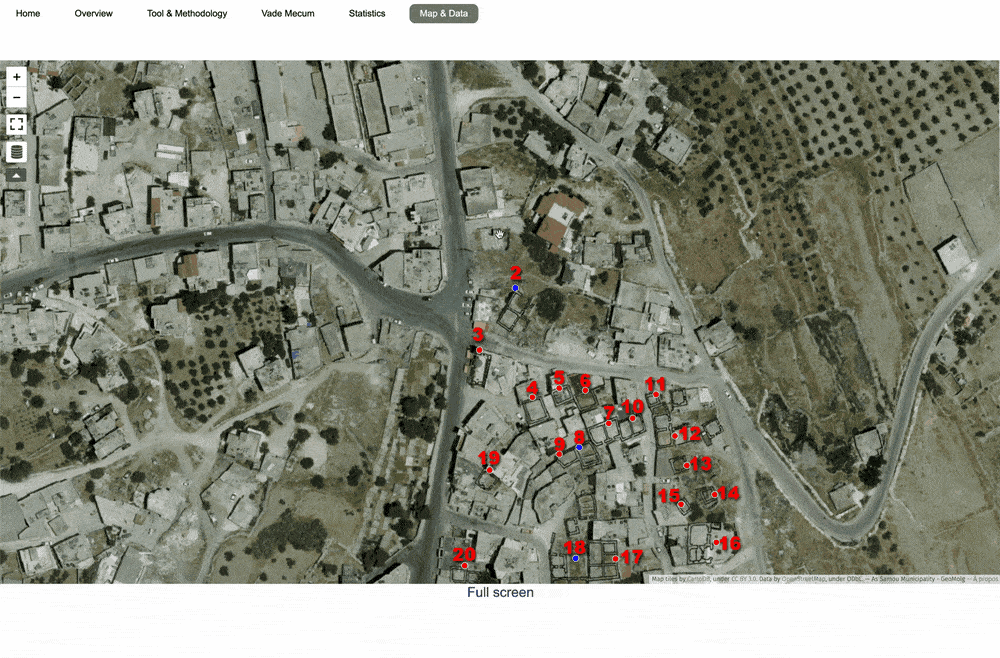
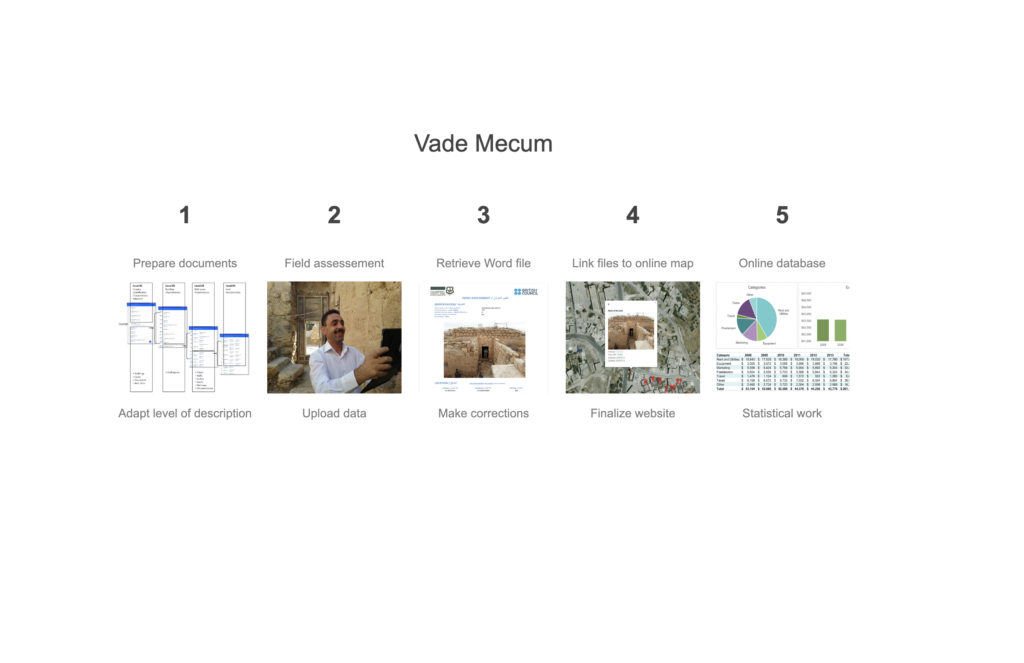
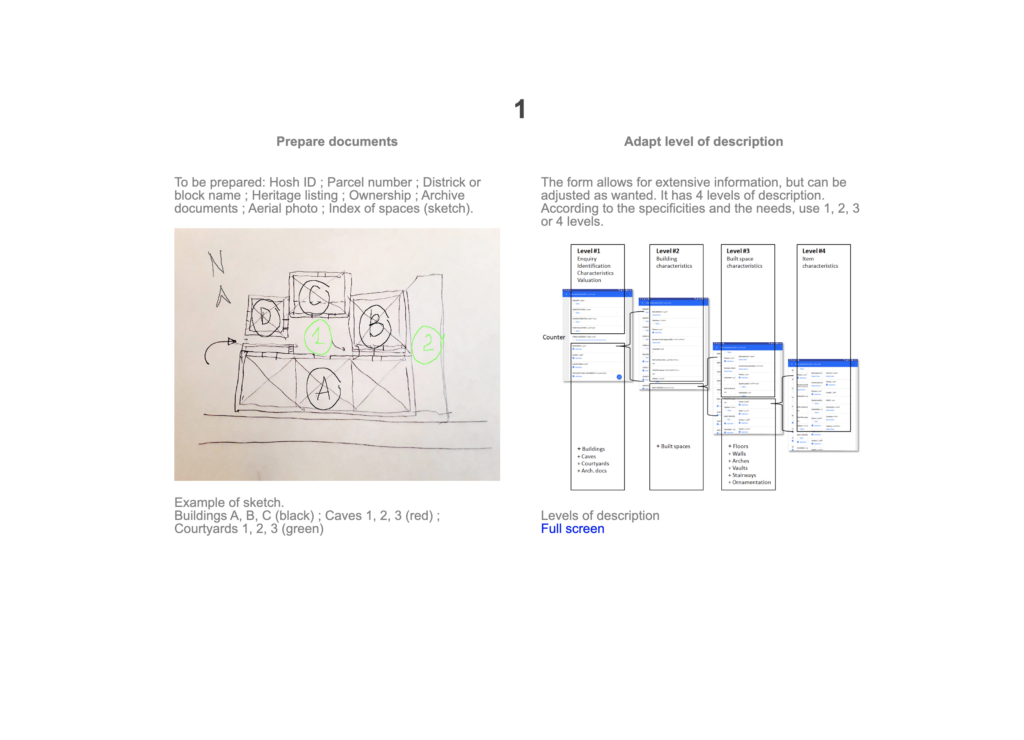

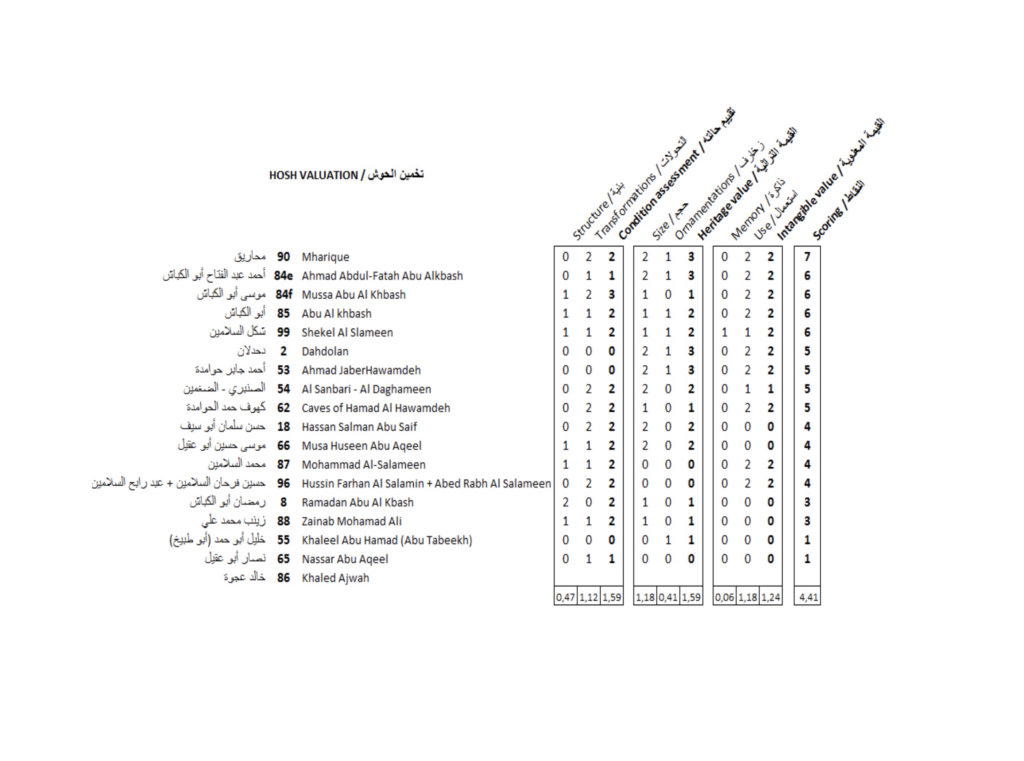
In the end, a total of 25 historic buildings were incldued in the project for cleaning, consolidation and historical-archaeological studies.
The activities related to data collection and inventorying were documented from the very beginning, to show our approach as well as what we carried out.
The result is the documentation of a shared path sensitive to local history and very different from many past co-operation projects, because this project started from the identified expectations and real needs of the local community.
2018
Rehabilitation, restoration and reuse
To restore built heritage properly, taking good care is a neccessity. It’s care for what already exists, in an effort to protect history and identity without being invasive.
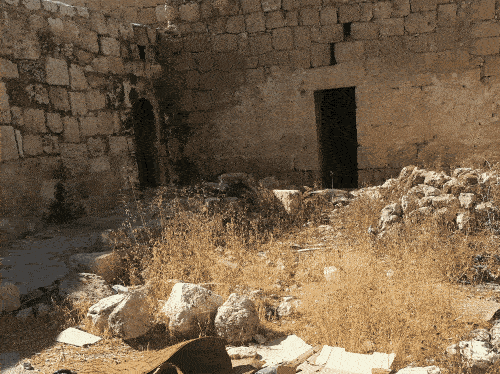
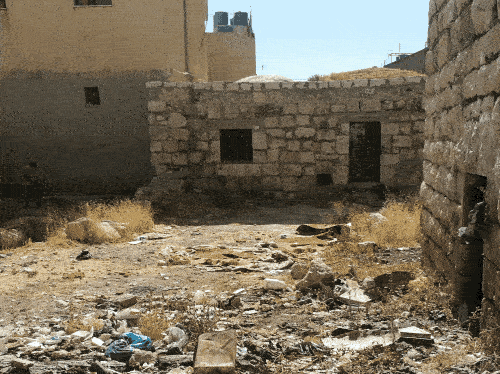
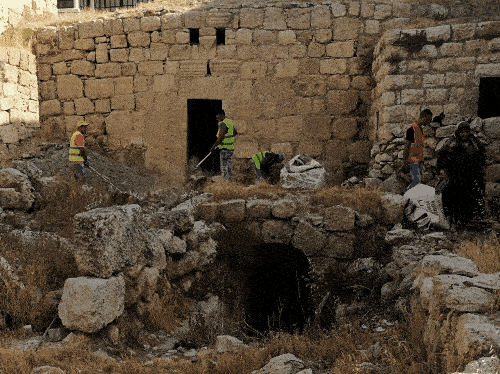

It’s also care for local people. We have always worked in synergy with the community to develop a project based on their needs. This is why local people have been involved from the beginning.
The aim of the regeneration of the historical centre was to host social and educational events, in order to promote more social initiatives in a place full of young people but lacking safe meeting points.
One of the ahwash, the hosh Al-Aqeeli, has been rehabilitated into the Cultural and Youth Centre, which will host both cultural and educational activities.
The works at hosh Al-Aqeeli have been used as a training ground for local young apprentices who were interested in learning about built heritage restoration and conservation.
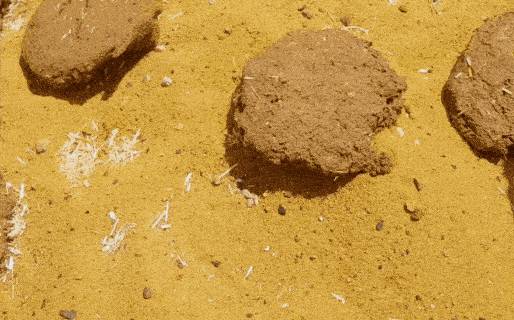

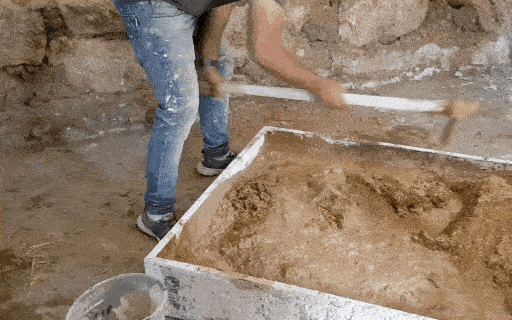
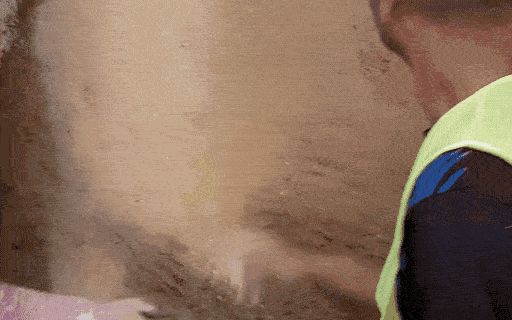

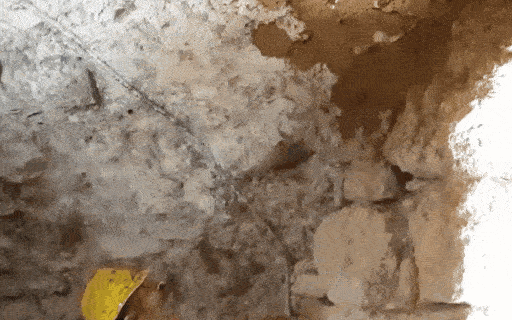
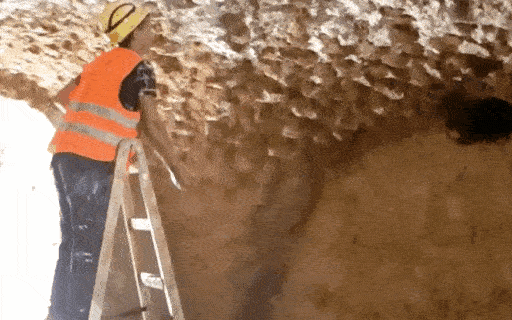
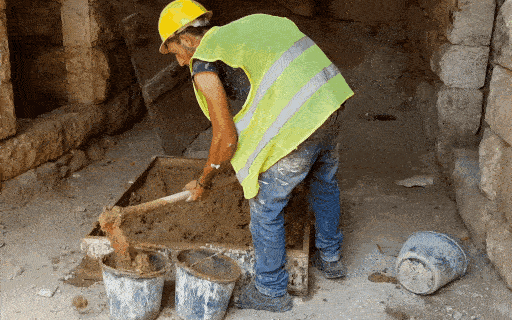
Many other activities, such as guided tours and the Educational workshop for kids, were developed to raise awareness of the value of local cultural heritage and the importance of its preservation.
2019
Community development
The project was designed to act as a strong driver for community development and social integration.
The intervention has focused on educating the local community to take care of the restored heritage, for the present and future, without depending on further external input. There has been a shared sense of responsibility between the beneficiaries and those who have helped them.
This is why the project also aimed to strengthen the specialist skills of the local cultural workforce for future restoration and preservation. This was achieved through training local young apprentices and professionals in the management and promotion of local cultural heritage.


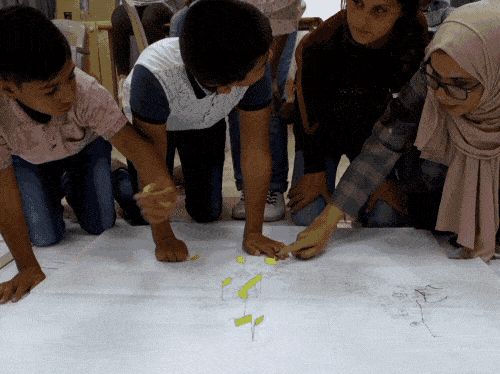
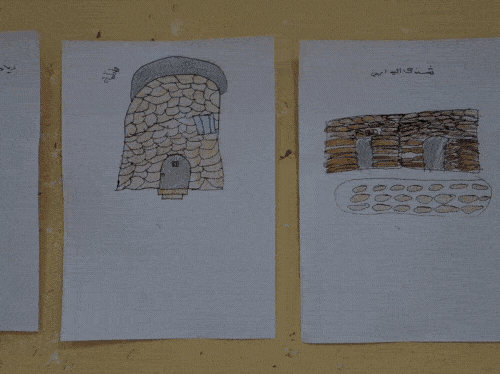
During the training, we encouraged learning by doing. Every day, the topic addressed in theoretical sessions held during the morning was further explored by participants during the afternoon, through a group based practical exercise.
A journey through time, an immersion in history, in a unique context. As Samou’ is all to be discovered, walking along dedicated paths among the renovated ahwash, for a cultural, cohesive and unforgettable experience.

The project also addressed the economic needs of the local population at a time when unemployment is high, especially among young people, with 59% of those in the 15-25 year old age range underemployed or unemployed. By creating a centre for cultural and educational initiatives, the project promoted concrete social development actions.
Population
26,000
Youth population
13%
Employment
49%
Youth empl.
41%
The result supports social cohesion among the local community, especially young people.
One place, many stories, a thousand opportunities. For the local community and for visitors. A house of stories, a centre of activities and a model for building the future with respect for the past.
